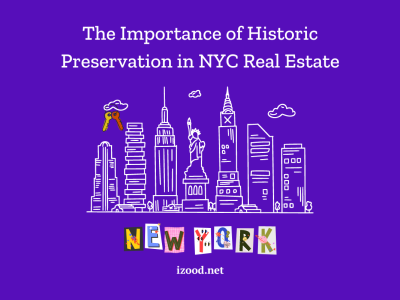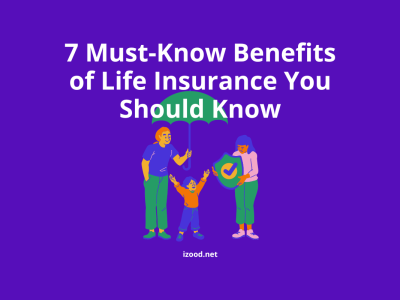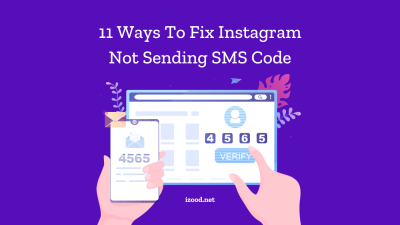
Shipping vehicles come with risks of damage, accidents, or lawsuits that cost money. But special insurance helps owners avoid big losses if cars, motorcycles, or trucks get hit with problems during delivery. This short intro explains vehicle transportation insurance, how it shields against harm, and why it matters for easily moving assets from place to place.
Transportation policies pay for vehicle loss or legal issues across any shipping method – trucks, trains, boats, or planes. Premiums match coverage to the vehicle’s value, possible issues during transit, and the deductible you select. Owners can tailor extra protection where they need it.
Good insurance gives confidence and stability. Policies not only save individuals money on personal cars but also help huge shipping companies reliably keep vehicles rolling worldwide. Payouts assist businesses after crashes. As more vehicles shuttle rapidly across borders, evolving insurance tools will promote needed growth and safety.
This overview shows how special policies, money management, and risk experts enable smooth journeys for precious automobiles. If you’re curious to learn details on available coverage, filing claims, tips for ideal protection, and more, read the full guide meant for vehicle owners seeking informed decisions shielding their investments each shipping mile.
Understanding the Need for Insurance in Vehicle Transportation
Insuring vehicles for transport mitigates financial threats from potential mishaps. Examining key hazards and real cases where insurance proved vital sets the scene.
Risks Associated with Vehicle Transportation
Numerous things can impact uninsured vehicles in transit:
- Accidents: Collisions or rollovers remaining top risks causing vehicle damage or loss across transport types. Wind/weather risks also increase damages.
- Theft: Vehicles left unattended at ports or overnight truck stops are prone to theft and driving insurance needs. Insiders also steal whole truckloads, making insurance essential.
- Vandalism: Opportunists noticing high-value vehicles can vandalize exteriors with keys spray paint tagging truck contents.
- Mechanical Issues: Engine problems from agitated fluids/loose panels during shipping may arise, needing insurance support. Fuel leakage also risks fires.
- Legal Liability: Accident lawsuits from affected third parties push liability costs without adequate legal/public damage coverage.
When Insurance Made a Difference
Insurance helps most when big disasters hit. Looking at real situations shows how coverage saves cars, trucks, and transport companies from financial crisis after huge accidents:
- Classic Mustang Wrecked: A valuable 1965 Mustang worth over $150,000 was badly damaged when a turning truck hit the car carrier trailer. Special insurance paid for all repairs, six months of rental cars for shows, and business losses – quickly giving over $100,000, so the owner recovered.
- Trucker’s Brand New Cargo Ruined: A truck filled with new BMWs slid off a slick road into a ditch during a heavy storm. The truck company’s policy fully paid the dealership for all destroyed vehicles, avoiding massive costs.
- Collector Porsche Destroyed: A rare, iconic Porsche racecar awaiting shipment burned up when another leaking vehicle sparked a warehouse fire nearby. The custom insurance awarded $4 million based on an expert appraisal to replace the destroyed car.
Types of Insurance for Vehicle Transportation
When shipping your car, one of the most protective policy types to buffer against financial loss is comprehensive insurance. Unlike basic liability coverage meeting state minimums for driving, comprehensive protection shields against harm from external forces beyond collisions.
This matters when others temporarily move your asset. Comprehensive insurance can financially cover vehicles damaged during transport arising from:
- Severe weather events – Hailstorms, high winds, flooding
- Fire damage – Fuel ignition, electrical shorts
- Theft – Stolen from trucks, dockyards
- Vandalism – Slashed tires, spray-painted logos
- Falling cargo – Unsecured loading impacts
Collision policies may also respond by covering accident repairs if the trucker or rail car damaged your vehicle while handling it. Transporters carry some protections but comprehensively fill gaps.
Insurers and policies widely vary regarding specific transportation claims and processes. Always directly ask your provider if comprehensive or collision policies travel with your vehicle when shipping to understand coverage. Review fine print exclusions, too. Securing robust supplemental insurance package products for priceless vehicles and collector cars gives added peace of mind if misfortune strikes amid the shuffle.
Liability Insurance: What It Covers
Alongside comprehensive coverage buffering common hazards, liability protection legally shields vehicle owners and transport companies from third-party harm. All registered auto carriers must carry minimum liability levels tied to their license per the DOT, covering damages to others, should negligence with transported vehicles occur.
What’s protected? Liability insurance pays for injury claims of people outside the policyholder, plus property damage inflicted on other parties stemming from the insured’s oversight or actions. Suppose your vehicle broke loose and hit another car mid-transport, for example, or items fell from a truck bed, smashing a home’s roof. In that case, liability coverage activates to settle victims’ hospital bills, auto body fixes, property loss claims, and lawsuit defense expenses up to defined limits, protecting net worth.
However, inspecting the fine print remains essential – maximum payouts vary widely across transporters. Requiring covered movers additionally holds an umbrella policy supplementing assets and future earnings exposure, which proves prudent for owners of priceless vintage vehicles where lawsuit risks run high. Asking core questions on deductibles, exclusions, claim procedures, and confirmation of active insurance also shows due diligence in upholding your interests when handing over your asset’s keys and title during the move.
How Insurance Protects Vehicle Owners and Transporters
Insurance delivers multifaceted protections benefitting both sides of vehicle shipping operations.
Protection for Vehicle Owners
Policies shield owners against:
- Financial Losses: Compensates for vehicle damage, loss, or destruction through insured perils like accidents, weather, fire, or theft.
- Liability Risks: Covers injury and third-party property damage liability claims if transported vehicle involved in at-fault accidents.
- Rental Car Support: Provides rental car reimbursement for daily transportation needs if the vehicle is out of commission during long repairs.
- Peace of Mind: Reduces worries transport mishaps may lead to lawsuits, debt, or stranded asset losses, even if unlikely.
Insurance prevents owners from absorbing devastating out-of-pocket costs from potential incidents.
Protection for Transportation Companies
On the business side, insurance enables transporter success through:
- Fulfilling Legal Requirements: Mandatory insurance minimums required as part of licensing needs are covered.
- Business Continuity: Crashes or massive claims won’t sink entire companies due to premiums smoothing costs over time.
- Client Reassurances: Demonstration of adequate coverage signals safety for new customer trust and retention.
- Asset Risk Balancing: Enables management of higher-risk vehicles like exotics, antiques, or top-heavy loads, improving profit margins.
The Process of Getting Transportation Insurance
Protecting your asset during a car, motorcycle, or specialty equipment transport journey starts with getting the right insurance policy. Follow key steps for coverage and know what to look for.
Getting Insurance for the Shipment
First, set up coverage through these actions:
- Review Current Protection: Check existing auto policies to see if they transfer to third-party transit before buying anything new outright. Expect exclusions.
- Calculate Ideal Coverage: Value your transport items and risks like weather, crashes, and theft that policies could shield. These estimates needed limits.
- Vet Transporter Insurance: Review certificates from movers detailing mandatory liability minimums, value caps, and omissions you may need to fill.
- Get Quote Options: Shop specialty insurers familiar with collector cars or equipment transports. Compare premiums and gap fills.
- Finalize Extra Insurance: Purchase supplemental coverage addressing shortfalls between personal transporter policies and asset value left exposed.
- Document Details: Catalog supplementary policy numbers, vehicle images, damage ahead of the move, and emergency contacts for smooth claims if needed later.
Following this method avoids overlapping policies while gaining comprehensive protection.
What to Look for in a Good Insurance Policy
Quality coverage exhibits:
- Clear Peril Listing: Explicitly covers vehicle loss from crashes, weather, fire, and theft at low or no deductibles.
- Sufficient Maximums: Payout ceilings match the insured value of the vehicle & contents. Includes some liability relief.
- Fair Premiums: Competitively priced from trusted underwriters given coverage parameters like vehicle worth.
- Responsive Company: Provides convenient certificate fulfillment, claims, and customer support access speaking to real people.
Vetting policies on these facets ensure your precious cargo and concerns stay protected when handed off for transit, letting you focus on the destination ahead, not potential disasters.
Legal Aspects of Transportation Insurance
Meeting regulations and interpreting policy terminology secures coverage when shipping vehicles. Federal & state laws require transporter carriers to hold:
- Liability Insurance: DOT operating licensing mandates base liability plans covering bodily harm and property damage claims resulting from shipping incidents, beginning at $750,000.
- Posted Insurance Certification: Interstate movers must register insurance paperwork with licensing authorities confirming active coverage.
- Disclosure to Customers: Carriers must reveal insurance details like liability limits and exclusions to help owners assess risks and needs.
However, bare minimum policies severely underpay relative to high-value vehicle losses. Major gaps remain for antique cars and custom equipment needing supplementary coverage.
Decoding Policy Jargon
Comprehending key phrases prevents misunderstandings about protections, limitations, and claims:
- Declarations Page: Lists coverage, limits, exclusions, deductibles, and premium costs in effect binding the insurer. Master this critical page.
- Endorsements: It’s an additional supplemental coverage add-on that customizes protection like rental reimbursement during repairs after an accident.
- Depreciated Value: An aged asset’s worth accounting for wear-and-tear deductions assessed on damage payouts. Often disputed.
- Stated Value: Agreed on preset insured value paid on total loss independent of deprecation arguments.
Knowing laws mandating minimum trucker insurance plus parsing specialized policy terminology empowers smarter conversations with transport sales staff about risks and ideal coverage for special automotive assets. Ask questions before signing agreements!
Navigating the Legal Side of Auto Transportation Insurance
Operating commercial vehicles for auto transportation requires adhering to specific legal regulations. Understanding the laws around minimum insurance requirements and complex policy terminology is essential for compliance and risk mitigation. This blog breaks down key aspects of transportation insurance laws and legalese that owners, operators, and drivers should know.
Meeting Minimum Insurance Requirements
Depending on the type and size of your transport vehicles, your state will mandate you carry particular liability coverage minimums. Most states require you to carry the following core commercial auto policy coverages:
- Bodily Injury Liability covers injuries sustained by other parties in an accident you cause. Minimum limits range from $100,000 – $750,000, depending on your jurisdiction. Please meet these to avoid major fines or loss of your carrier’s operating authority.
- Property Damage Liability covers damage to property you cause in an accident. Minimums often $25,000 – $100,000. Falling short here can lead to paying costly claims out-of-pocket.
- Personal Injury Protection (PIP) covers medical expenses for you and your employees injured in an accident, regardless of fault. Typically, a $5,000 minimum.
Make sure you know precisely what limits you are carrying. Paying premiums on time also ensures continuous, uninterrupted coverage.
Decoding the Legal Jargon
Transportation insurance policies contain specialized terminology and legalese that need to be clarified. Below are some key terms and concepts drivers should understand:
- Combined Single Limit (CSL): It is the maximum payout for any single accident covered under the policy. Combines limits for bodily injury liability, property damage, and other coverage into one lump sum.
- Motor Truck Cargo Liability: Covers loss or damage to the cargo you are transporting. Limits vary greatly depending on cargo value.
- Subrogation Clauses: Allow your insurer to legally pursue third parties at fault for losses in order to recover money paid out under your claim.
- Endorsements: Changes or addendums added to an insurance policy that alters the original terms and conditions. It should be reviewed closely and understood.
Cost-Benefit Analysis of Transportation Insurance
When operating large US commercial vehicle fleets, unexpected crashes and damages can easily spiral into million-dollar debacles. In 2019 alone, over 23 million vehicles were damaged in motor vehicle collisions nationwide. As leaders weigh expensive insurance premiums versus self-insuring risks, understanding the trade-offs is key.
Evaluating Premiums Against Exposures
Paying $250,000 annually to insure 50 trucks may seem unnecessary upfront. However, with over 23 million vehicles damaged in crashes in 2019, disasters happen. Just one major collision could easily exceed $1 million when combining cargo losses, property damage, and lost income.
While no one enjoys premiums, coverage transfers seven-figure risks to insurers – a prudent move given the sheer volume of vehicular damages annually. Self-insuring could require millions in reserves few businesses can access.
Choosing the Right Transportation Insurance Partner
When evaluating carriers to underwrite your commercial auto, cargo, liability, and specialty policies, several key criteria merit consideration. Here are a few of them to help you choose the best vehicle transport company.
Critical Coverage Capabilities
Assess the provider’s ability to deliver tailored solutions addressing your industry’s unique risk profiles beyond basic off-the-shelf offerings. Seek specialization in insuring transportation sectors with bundled solutions spanning first- and third-party risks. Confirm their policies and limits align with your evolving regulatory and client needs nationwide.
Claims Handling and Responsiveness
Closely vet each carrier’s financial strength, timeliness in paying substantial claims, and reputation with regulators and rating agencies like A.M. Best. Require evidence that they maintain sizable reserves and surplus capital to fund six- and seven-figure losses. Review how they triage incidents, advocating to protect your interests most during accidents. Disaster response matters more than discounts.
Loss Control and Risk Consulting
Evaluate what safety, compliance, and fleet management guidance the insurers offer. The strongest go beyond liability coverage in helping you operate safely and avoid incidents altogether. Carefully weigh service capabilities, positioning your firm to capture underwriting savings through reduced losses long-term.
Common Misconceptions about Transportation Insurance
Getting proper protection for trucking, delivery, and shipping services means filtering out false information. Lots of myths exist around commercial insurance policies, confusing leaders in assessing real risks. Here, we debunk some common misbelieves about insurance preparations:
“Captive Insurers Get the Lowest Prices”
Not true. While captive insurers provide specialized products to parent companies, independent agents often find better pricing for common risks like business vehicle policies. Broker Carl Stevens says, “More competition brings better deals.” Having options beats single sources.
“Bankruptcies Happen Because Claims Get Denied”
Also false, says lawyer Leah Wilson. “Big debt, bad money management or low cash reserves—not denied claims—mainly cause Chapter 11 bankruptcy.” Check an insurer’s finances first, not complaint stories.
“More Regulations Bring More Protection”
Doubtful, says industry analyst Rob Arrow. “While rules establish a basic duty of care, an insurer’s competence and discipline matter more than technical compliance. Well-run companies focus on transparency and helpfulness, not just following strict control rules.”
Conclusion
As this analysis illustrates, insurance constitutes a fundamental pillar upholding the vehicle transportation ecosystem against risks inherent to complex logistical operations. By distributing the economic impacts of collisions, cargo losses, and liability events across many partners, coverage lets transport firms focus on progress.
Insurance, therefore, provides the very financial equilibrium that encourages capacity investment, innovation, and affordable mobility that consumers and businesses rely upon daily. The promise of coverage future-proofs vehicle transporters facing uncertainty on long-standing plans to meet demand. It justifies the tireless drive towards efficiency gains even as harsh realities impose setbacks.
By consciously aligning the interests of risk-takers with stewards around reasonable controls and mature perspectives, insurers realign disruptive risks into shared progress, fueling ambitious ventures forward. There can only be an open road with some assurance protections that make the way drivable for all seeking passage. True partners pave those paths together.











